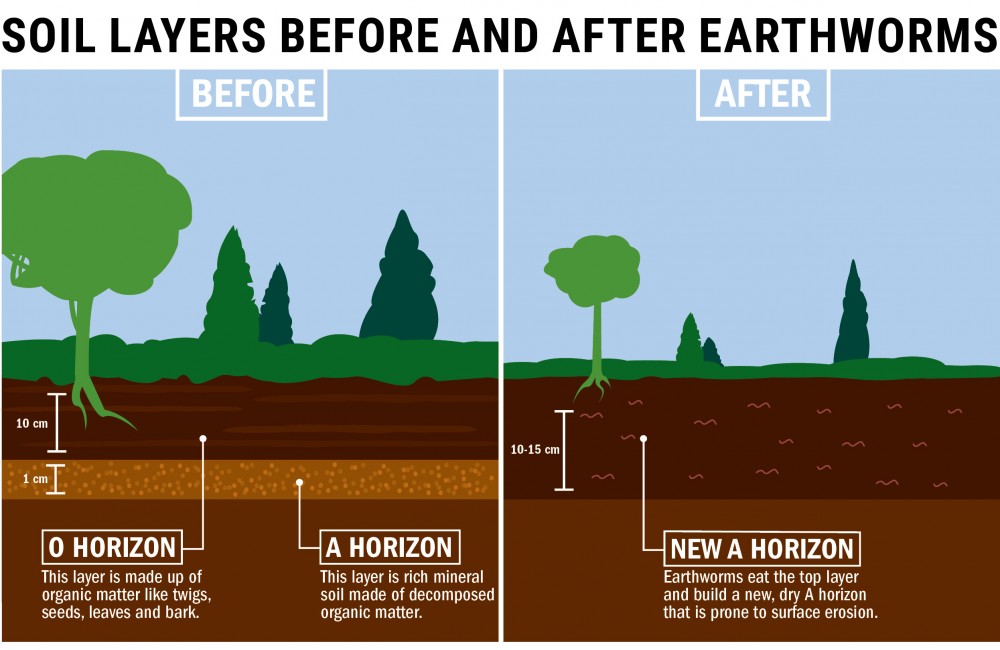The night crawler — an earthworm native to Europe — first wriggled its way to Minnesotan soil as fishing bait but now presents a serious risk to forests.
University of Minnesota researchers recently completed a 16 year study which found that earthworms disrupt a forest’s black and spongy top layer of soil called the litter layer.
Leaf litter keeps the soil moist and warm, gives shelter for small creatures and protects tree roots. The earthworms move through layers of soil, eating dead matter such as leaves and seeds, making the soil dry, brittle and susceptible to droughts.
University researcher Lee Frelich tracked the spread of European earthworms for about 16 years.
“It’s too late,” Frelich said of the worms’ spread. “If you can’t change a situation, learn to adapt and get along with it.”
He said European settlers brought the worms to America in their planting sod and nursery plants. Frelich said the worms’ impact on native ecosystems makes room for invasive species like buckthorn, garlic mustard and wild honeysuckle to grow.
“People don’t think it matters if they move soil around,” said Mari Cartwright, environmental science, policy and management senior.
Invasive plants such as buckthorn spread shade on the forest floor — effectively blocking out other plants in the same spaces, Cartwright said.
“Buckthorn is really hard to get rid of and most people think it’s just a regular plant,” she said.
But worms aren’t the only problem.
When deer populations are high, their grazing of native plants also opens the soil for these invasive plants to colonize, said Bruce Carlson, Minnesota Biological Survey supervisor.
“It’s a one-two knockout punch kind of thing,” Carlson said.
Some native plants hurt by the worms are spring ephemerals, Pennsylvania sedges, goblin ferns and flowers such as violets and lady’s slipper orchids.
It is possible that European organisms living in the soil such as fungi, beetles, centipedes and millipedes have had more time to adapt and become better competitors, Frelich said.
“In Europe, the same worms create the richest soil,” he said.
Despite the slow natural pace of earthworms, humans have sped their spread with fishing, building and moving plants.
Carlson said earthworms are helpful when used in gardening to turn soil nutrients, but many don’t realize these benefits don’t extend elsewhere.
“Forests is where we see the biggest, most dramatic impact,” he said.
Luke Ratgen, an environmental science senior, said he tried to clear buckthorn from his home, but to get rid of the invasive plant — whose growth is spurred by the worms — he had to cut its branches and dig up the roots.
Now, other University researchers are studying European soil composition in Sweden and Estonia to compare to American soil.
“These days, there’s always an invasive knocking at the door to get in someplace,” Carlson said.








